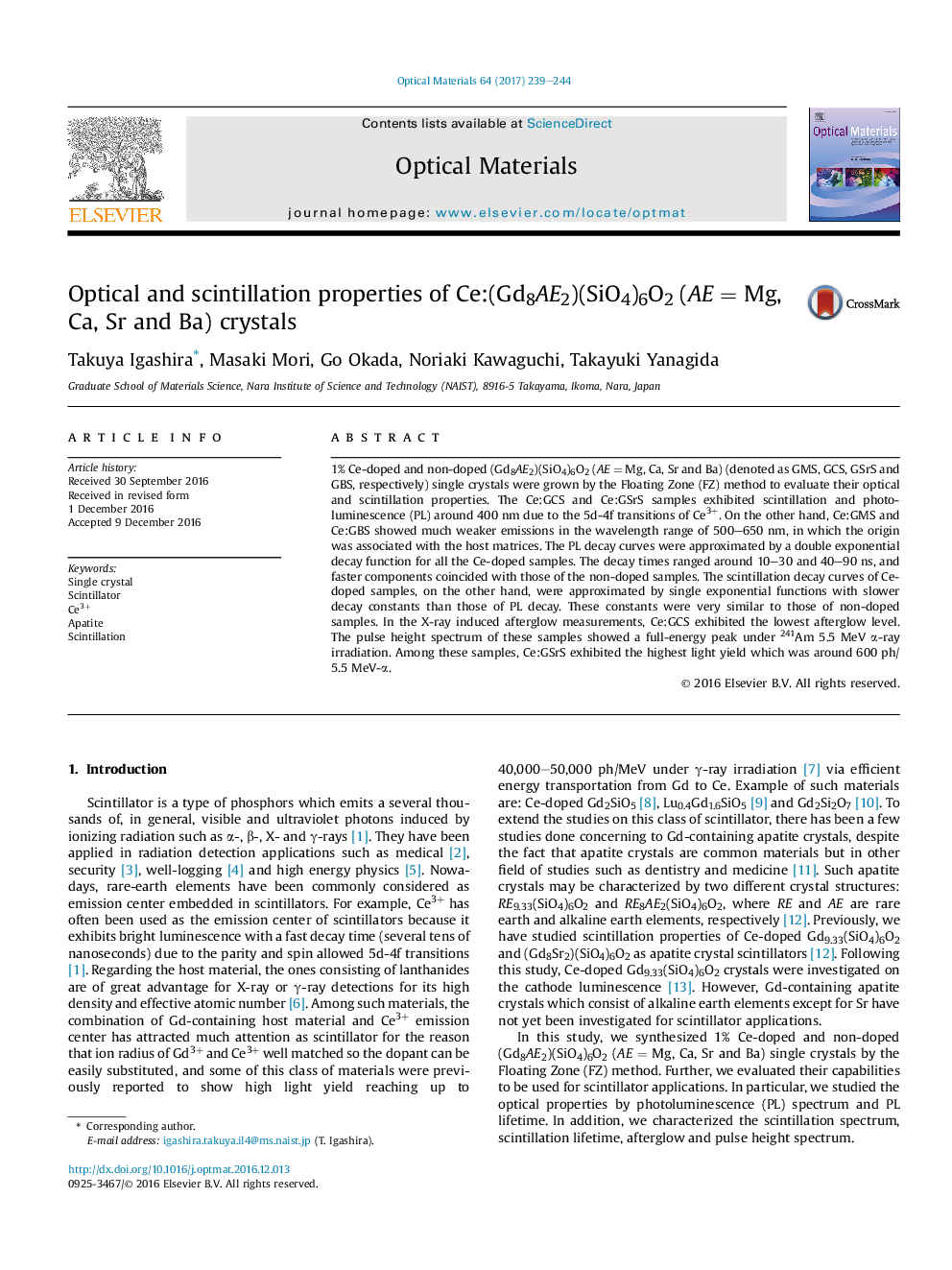| Article ID | Journal | Published Year | Pages | File Type |
|---|---|---|---|---|
| 5442703 | Optical Materials | 2017 | 6 Pages |
Abstract
1% Ce-doped and non-doped (Gd8AE2)(SiO4)6O2 (AE = Mg, Ca, Sr and Ba) (denoted as GMS, GCS, GSrS and GBS, respectively) single crystals were grown by the Floating Zone (FZ) method to evaluate their optical and scintillation properties. The Ce:GCS and Ce:GSrS samples exhibited scintillation and photoluminescence (PL) around 400 nm due to the 5d-4f transitions of Ce3+. On the other hand, Ce:GMS and Ce:GBS showed much weaker emissions in the wavelength range of 500-650 nm, in which the origin was associated with the host matrices. The PL decay curves were approximated by a double exponential decay function for all the Ce-doped samples. The decay times ranged around 10-30 and 40-90 ns, and faster components coincided with those of the non-doped samples. The scintillation decay curves of Ce-doped samples, on the other hand, were approximated by single exponential functions with slower decay constants than those of PL decay. These constants were very similar to those of non-doped samples. In the X-ray induced afterglow measurements, Ce:GCS exhibited the lowest afterglow level. The pulse height spectrum of these samples showed a full-energy peak under 241Am 5.5 MeV α-ray irradiation. Among these samples, Ce:GSrS exhibited the highest light yield which was around 600 ph/5.5 MeV-α.
Related Topics
Physical Sciences and Engineering
Materials Science
Ceramics and Composites
Authors
Takuya Igashira, Masaki Mori, Go Okada, Noriaki Kawaguchi, Takayuki Yanagida,
